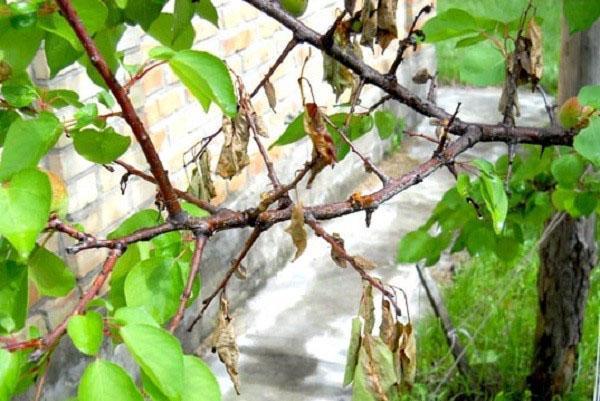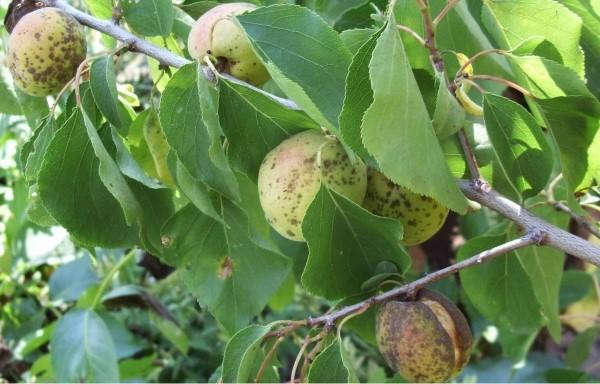How to deal with apricot moniliosis with chemicals
 As representatives of stone fruits, apricots are often subject to such a disease as moniliosis, which affects this particular group of garden trees. As a result, gardeners are left without a crop, and the apricot itself begins to disappear. Moniliosis it is difficult to treat, but you can still try to save the garden using special preparations and the correct processing technology.
As representatives of stone fruits, apricots are often subject to such a disease as moniliosis, which affects this particular group of garden trees. As a result, gardeners are left without a crop, and the apricot itself begins to disappear. Moniliosis it is difficult to treat, but you can still try to save the garden using special preparations and the correct processing technology.
Typical manifestations of the disease

Favorable conditions for the development of the disease are warm winters and rainy springs, as well as spring temperature drops.
Depending on the phase of development of the apricot, at which moniliosis affects the culture, two forms of its manifestation are distinguished:
- monilial burn - flowers begin to turn brown in a flowering apricot, then they crumble, leaves and young shoots dry out, and old branches become covered with cracks;
- gray rot - affects the fruits during their ripening, forming a gray bloom, and leads to their abscission.
How to treat?
A single processing of apricots is not effective, because moniliosis should be fought throughout the entire growing season.
To rid apricots from an obsessive fungus, it is necessary to carry out a number of activities and treat the tree with special solutions for each vegetative phase of development:
- Immediately before flowering - a solution containing 100 g of copper sulfate (or copper sulfate) and 400 g of a mineral oil emulsion (preparation 30B).
- During flowering - with a solution containing such active ingredients as boric acid, diaphanate-methyl and difecanazole. The dosage for 1 liter of water is 10, 500 and 250 g of the corresponding preparation.
- Two weeks after flowering - with a solution of difhecanazole with the addition of a systemic drug (captan).
If moniliosis reappears during the ripening period of the crop, biological preparations such as Fitosporin, Phytocid, Trichodermin, Gauksin can be used for further spraying the apricot.